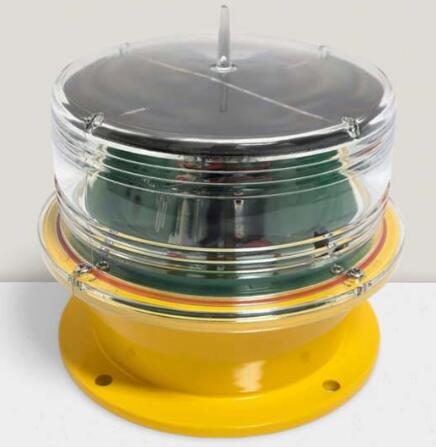Solar Aviation Light Technology: Advancing Airfield Safety with Sustainable Power
In recent years, the aviation industry has been undergoing a transformation, not just in aircraft design and airspace management, but also in how ground infrastructure supports safe operations. A key development in this evolution is the solar aviation light, a modern, energy-efficient solution increasingly deployed in airports, helipads, and aviation-related facilities worldwide. This article explores the essential role of solar aviation light systems in today’s aviation landscape, detailing their functionality, benefits, applications, and future potential.
What Is a Solar Aviation Light?
A solar aviation light is a self-contained lighting unit designed specifically for aviation purposes, powered by solar energy. These lights are typically installed on runways, taxiways, helipads, or obstruction points such as towers and high-rise structures. Unlike traditional lighting systems, which rely on grid power and extensive cabling, solar aviation lights operate independently, drawing energy from sunlight and storing it in internal batteries.

These systems function automatically, activating during low-light conditions and turning off during daylight. They provide high-intensity illumination to ensure visibility from significant distances, aligning with international aviation standards for safety and compliance.
The Shift Toward Sustainable Lighting Solutions
The growing adoption of solar aviation light technology is driven by the global push for greener, more sustainable infrastructure. Traditional airfield lighting systems consume significant energy and often require complex installations. In contrast, solar aviation lights offer a cleaner, low-maintenance alternative that aligns with environmental goals.
Moreover, in remote or developing regions where electrical infrastructure is limited or unreliable, solar aviation lights provide a practical and immediate solution. These lights enable smaller airstrips and emergency landing sites to function safely without the need for grid power.
| Solar Aviation Light |
Key Advantages of Solar Aviation Light Systems
The use of solar aviation light technology brings several practical benefits to the aviation sector:
1. Energy Independence
Solar aviation lights eliminate dependence on external power sources, making them ideal for off-grid installations. This self-sufficiency enhances operational reliability, especially in isolated locations or during power outages.
2. Low Maintenance
With no wiring, trenching, or heavy infrastructure required, solar aviation light systems are easy to install and maintain. Many units are designed with robust materials to withstand extreme weather conditions and require minimal servicing.
| Solar Aviation Lights |
3. Automatic Operation
Most solar aviation light units include sensors that automatically adjust lighting intensity and operation times based on ambient light conditions. This automation ensures continuous, adaptive performance without manual intervention.
4. Cost-Efficient Over Time
While installation may be simple, long-term operational efficiency is the standout benefit. Reduced maintenance, lower energy usage, and the absence of electricity costs contribute to ongoing efficiency gains.
Applications of Solar Aviation Light Systems
Solar aviation lights are used across a wide range of aviation settings:
• Runway and Taxiway Markings
Solar lights can be installed along the edges of runways and taxiways, enhancing visibility during night operations or in low-visibility weather conditions.
• Helipads and Heliports
Emergency response, medical, and offshore helipads often use solar aviation lights to guarantee safe helicopter landings where conventional lighting may be unavailable.
• Temporary Airfields
Military operations, disaster relief missions, and construction zones frequently establish temporary airstrips where rapid deployment of lighting is critical. Solar aviation lights provide a mobile and dependable solution.
• Obstruction Marking
Towers, cranes, wind turbines, and tall buildings require marking to alert aircraft of their presence. Solar aviation lights serve as effective obstruction warning devices that remain visible throughout night and day cycles.
Meeting International Aviation Standards
For any aviation lighting system to be effective, it must comply with global aviation safety regulations. Solar aviation light units are designed to meet specifications set by:
ICAO (International Civil Aviation Organization)
FAA (Federal Aviation Administration)
EASA (European Union Aviation Safety Agency)
These standards cover aspects such as light color (typically red or white), intensity, flashing frequency, and durability. Compliance ensures that solar aviation lights provide reliable guidance and hazard marking for all aircraft operations.
Challenges and Considerations
While the advantages of solar aviation light systems are clear, they are not without limitations:
Weather Dependence: Extended periods of cloud cover or insufficient sunlight can impact charging performance. High-capacity batteries and energy-efficient LED modules help mitigate this issue.
Initial Planning: Site evaluation is critical to ensure optimal sunlight exposure and correct positioning. Poor installation can reduce efficiency and coverage.
Security and Vandalism: In unsecured environments, these lights may be at risk of theft or damage. Proper housing and anchoring systems are often used to protect the units.
Despite these challenges, continuous advancements in battery storage and solar panel technology are steadily improving the performance and reliability of these systems.
Innovation and the Future of Solar Aviation Light Systems
As smart technologies continue to merge with aviation infrastructure, the next generation of solar aviation light systems is expected to include features such as:
Remote Monitoring: Integration with wireless communication networks to provide real-time status updates and fault alerts.
Adaptive Brightness Control: Systems that adjust brightness based on weather, time of day, or specific aircraft movements.
Modular Designs: Easily interchangeable components to facilitate upgrades or repairs without full replacement.
Integration with Air Traffic Management: Lights that can interact with aircraft transponders or airport control systems for enhanced coordination and situational awareness.
These advancements will not only enhance safety but also extend the use of solar aviation light systems to new aviation sectors, including drone corridors and urban air mobility platforms.
The solar aviation light has emerged as a critical tool in modern aviation infrastructure. With its ability to operate independently of electrical grids, reduce environmental impact, and provide reliable visibility, it is transforming how aviation facilities maintain safety and compliance. As the industry continues to embrace sustainability and smart technology, the solar aviation light stands out as a forward-looking solution that combines innovation, efficiency, and safety in one powerful system.
